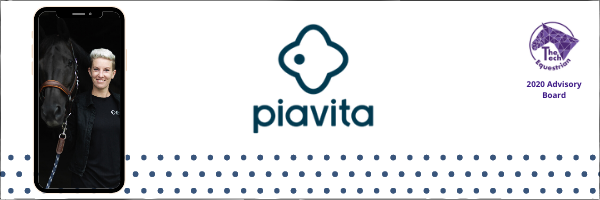TTE ADVISORY BOARD: Data Insights
One can argue, that data has been the single most powerful tool in our fight against the global pandemic. From how to prevent the disease (six feet, masks, washing) to percentage of exposure and chances of the next hotspot. We live in extremely difficult times – and even with technology, you can easily get overwhelmed with consuming too much information and confused on how to interpret. With all of the data drama playing out on a large scale, we wanted to ask The Tech Equestrian Advisory Board two questions on how data is used in the horse world:
1) Data storytelling is the ability to convey data not just in numbers or charts, but as a narrative that people can understand. What are some interesting data points/stories you've come across this year as it relates to horses and/or equestrians?
2) How do you use data when promoting or sharing the story of your brand?
On a broad scale, our data this year has shown that people want to connect more than ever. We’ve seen a large increase across the board with social reach and impressions. This is likely due to the current state of the world - with less in-person interaction, people seek person-to-person connection via technology. I would imagine that this would be true across all industries, but it was particularly impressive that when horse shows were cancelled and many barns were closed, the online community engagement skyrocketed.
We use data in a variety of ways. From google analytics to social data and everything in between, we use data to create targeted campaigns that will appeal to the right set of consumers and will engage our current users.
-Kate, Stable Secretary
The most interesting data point and story that I found recently was an article written by a horse show dad called "From the Outside Looking In." The striking article discussed the various financial challenges that a junior rider will face while riding in the competitive equitation divisions. The author conducted a statistical analysis on the amount of times a rider who makes it to the final round of the Medal/Maclay will compete and ride a different horse at horse shows. He found that the average rider who made it to the second round of the Maclay finals had shown 21 horses in 336 classes at 31 shows. The median was 15 horses, 289 classes and 30 shows. The lowest number was 4 horses, 112 classes and 21 shows while the highest was 59 horses, 930 classes and 45 shows. This was striking to me because if we start thinking of the average price of a horse show, say we are being conservative, $500 per show per horse, the average amount of money a parent will need to spend for their kid to be competitive at the Maclay finals is a whopping $325,500. Realistically, most of these kids will also go to WEF or the World Equestrian Center in Ocala, FL which will bring the grand total of half a million to a million dollars for just one show year period. To me, this shows two key stories: the first being that the A circuit horse show industry has created a deep financial divide and the second that data can empower us by seeing the problems firsthand. It allows us to think beyond the surface levels and allows us to ask deeper questions. For example, how can we find more solutions to level out the playing field? Do we create a new show circuit, new classes with finals that are equally recognized? Data allows us to reflect. Instead of looking at problems, data creates the pathway to solutions.
CAVALL believes in transparency whether it is for the buyer or the seller. We created an algorithm that allows us to aggregate data and optimize the horse's sale price in a fair and transparent way. For the buyer, it gives them the ability to understand the horse's price level relative to other horses they are looking at with the same criteria. On the seller side, it allows the seller to see the value of their horses are at the current market price. It allows them to see how they can position themselves to be aligned with other sellers and be more competitive.
- Juliette, CAVALL
Our users are constantly gathering data on their equine patients and using it to make informed decisions and diagnoses. But this year we have seen our users experience the power of accessing real-time data remotely. The pandemic has pushed the veterinary industry into digitalization by requiring many vets to reach their patients remotely. But on top of this, vets are under extreme pressure (even more than usual), as many clinics have reduced staff or staggered shifts to protect personnel. So, accessing patient information and monitoring ICU or isolation patients from a distance has helped our users save time.
Data is integral to every facet of what we do and how we promote our solution. When we are talking to prospects, it’s all about how we can make their lives easier and give them peace of mind by providing them with high quality, secure health data.
-Dorina, Piavita



